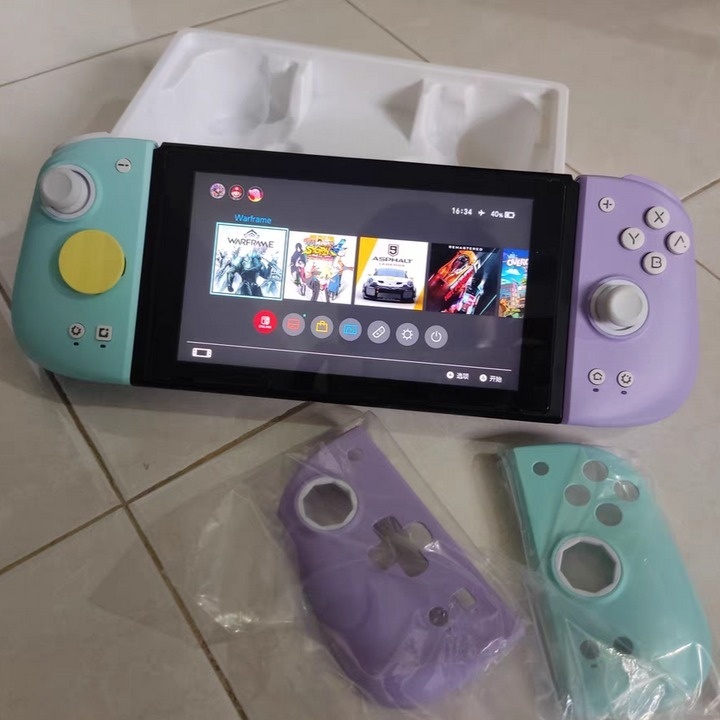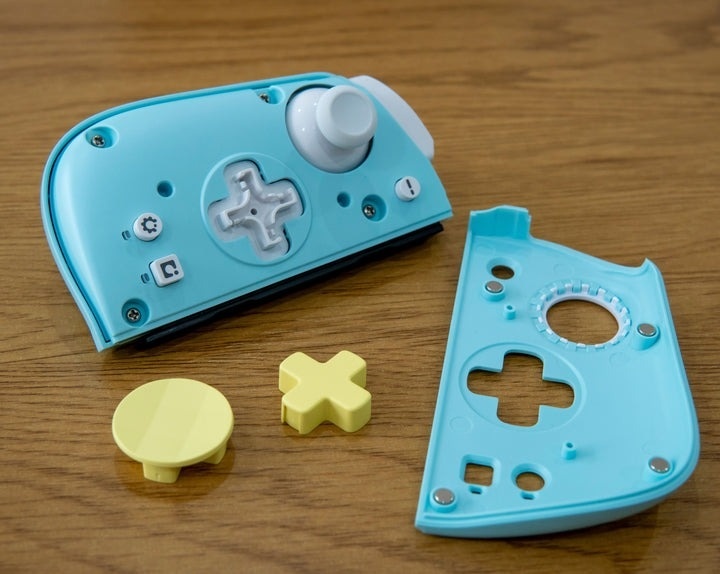
The Mobapad M6 S controller does pretty much everything the M6 HD does, with a few sacrificial differences to reduce the cost and provide a friendlier option for Nintendo Switch players wanting to save a little extra cash. Perhaps the most surprising aspect about the M6 S is just how many features carry over to this set of controllers, with the biggest changes being the lower-grade components used for the tactile buttons and the rumble mechanic.
For a more detailed look at what aspects make up the Mobapad M6 S, it would be wise to check out our review of the M6 HD controller, but let's give a little recap here.
This twin set of controllers functions in the same way as Nintendo's own official Joy-Con for the Switch, sliding onto the sides of the system as normal to play in handheld mode, or being detached to utilise in a freeform manner as a regular controller. As it stands, there is no attachment to hold the two Joy-Con together, and the official unit from Nintendo won't fit due to the shape of Mobapad's design. The two wrist strap units can smoothly slot onto the sides of the M6 S, however, rounding off the shape nicely, if desired.

What stands out when handling the two Joy-Con is just how comfortable they are. They mould neatly into the palms, and although there can be a little slippage with some prolonged play, the closeness to a more traditional controller offsets this for the wide range of possibilities the M6 S provides.
The Hall effect joysticks are a massive draw, and a pleasing feature that stays intact in this cheaper model of the M6 HD. The silver used for the vertical stick itself delivers an extremely smooth motion when rotating, and the replaceable faceplates with octagonal stick grooves mean players have the option of full 360-degree or eight-way gates for personal preference. The eight compass-point gates can sometimes go overlooked, but their inclusion suggests they are rightfully becoming popular in certain circles, particularly with fighting and platform game players. The faceplates can even be mixed and matched between the M6 HD, too, so a few colour combinations can be put together. Two switchable d-pad shapes can easily be placed, with the familiar plus-shape and a concaved circle pad being included.

Microswitches for the d-pad, face buttons and shoulder buttons are also a core part of the controller, but this is one of the few areas that takes a small reduction in quality over the M6 HD. Instead of the popular OMRON brand being incorporated, a cheaper alternative is utilised in the tacftile buttons.
They function very much the same, but there is a noticeable difference when examining both the M6 S and M6 HD. The MS 6 buttons have a slightly spongier feeling to them, not quite giving the impression of instant button registers that the M6 HD delivers, but it doesn't come across as so major that this version feels drastically worse.
The only other big difference is the rumble aspect, which again utilises a basic rotary vibration mechanic as opposed to the ALPS dual-axis motors seen in the M6 HD. Unless rumble is an important factor to the player, this shouldn't be seen as a massive disadvantage.

Great - Silver Award


 Sign In
Sign In 14.06.2024
14.06.2024  Sandy Wilson
Sandy Wilson 
 Link to this post:
Link to this post:  Subscribe to this topic
Subscribe to this topic Features
Features





 Top
Top

